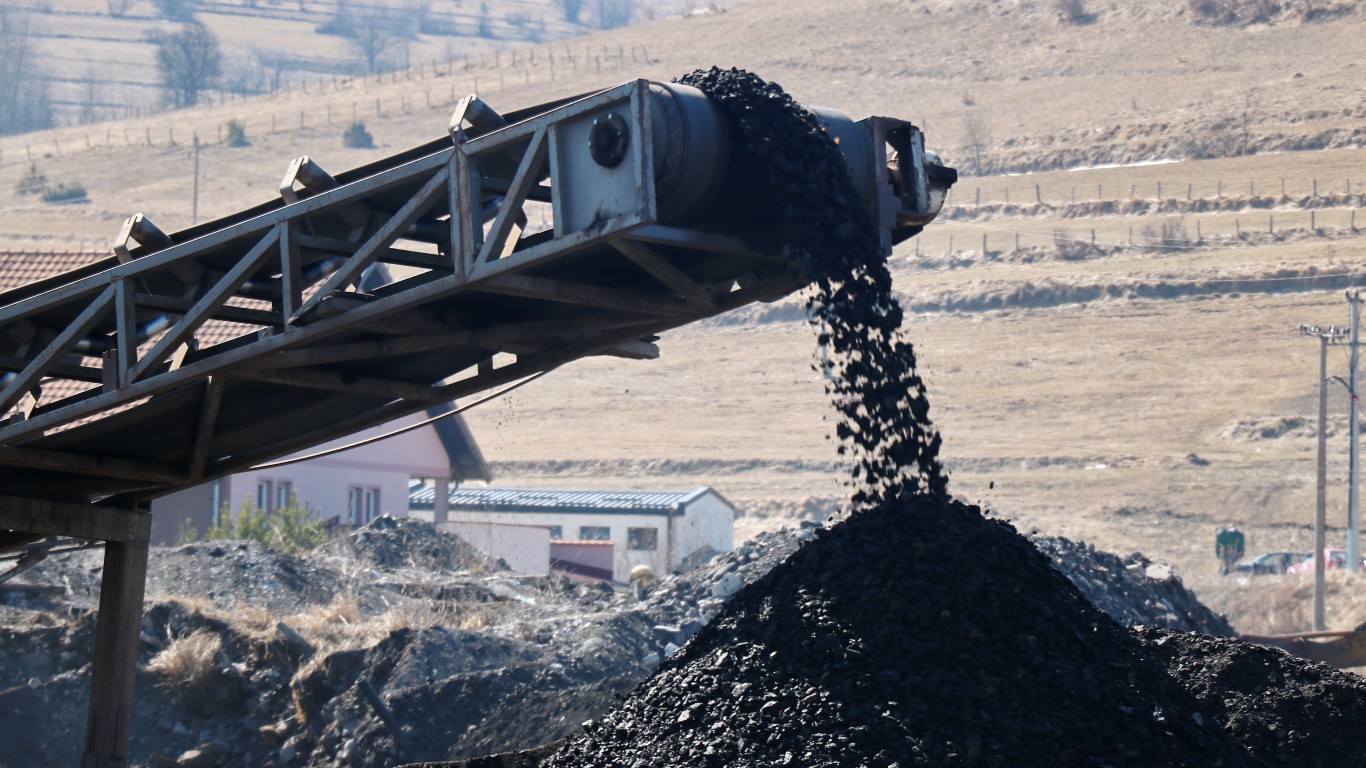
In an outlook report issued Thursday, Moody’s Investors Service lowered its 12-month sector rating on metals and mining stocks from stable to negative. The rating change reflects Moody’s expectations for credit fundamentals for the coming year.
Lower economic growth is reducing demand for metals and mining commodities. That is causing commodity prices and company earnings to fall.
Aluminum prices have fallen nearly 44% since posting an all-time high in early March. Over the past 12 months, prices have fallen by more than 25%. Moody’s cites higher energy costs and raw materials costs, particularly in Europe, as drivers for lower margins and earnings. Shares of Alcoa Corp. (NYSE: AA) have lost more than 40% of their value over the past 12 months and are down 61% since their 52-week high in March.
Nickel currently trades more than 26% higher than it did a year ago, but that is almost 50% lower than its peak price in mid-March. The nickel supply is increasing, Moody’s noted, but demand is not keeping pace. Demand for stainless steel, of which nickel is a key ingredient, is also slowing. Demand for nickel in lithium-ion battery cathodes is increasing, and that is helping offset the lack of demand elsewhere. Brazil’s Vale S.A. (NYSE: VALE) produced 12% of the world’s nickel in 2021, second only to Russian producer Nornickel. Vale’s shares are down about 12% for the year and down about 35% from their April high.
Copper prices have fallen by around 21% over the past 12 months and by about 31% since their March peak. Moody’s expects producers’ margins to continue declining due to lower production volume, higher input costs, and lower prices. The good news is that even the lower prices remain above costs for marginal producers, and that is keeping the industry profitable. Freeport-McMoran Inc. (NYSE: FCX) is the world’s largest publicly traded copper producer. The stock has dropped steadily for the past year and is down about 47%.
Zinc prices are down by around 3% for the past year, but the drop since the mid-April peak is nearly 33%. Moody’s notes that zinc prices already reflect recession risks. Inventories remain tight despite higher power prices in Europe that are causing smelters to cut production. The analysts do not expect prices to fall significantly unless demand weakens further. The world’s largest zinc mine is operated by Teck Resources Ltd. (NYSE: TECK). Its shares are up about 21% over the past 12 months, but since posting a 52-week in early June, the stock is down about 35%.
Gold prices are down about 6% over the past 12 months, and silver has dropped by nearly 16%. Moody’s blames higher interest rates and a stronger U.S. dollar for pushing investment away from precious metals. The analysts expect producers’ revenue to fall as costs increase, cutting into margins and reducing EBITDA. Input costs reached a 10-year high in the first quarter of this year due to fuel prices, tariffs on electricity higher wages, and higher price for consumables. Newmont Corp. (NYSE: NEM) is the world’s leading gold producer. Shares are down about 24% in the past 12 months and down about 50% from a 52-week high posted in April.
The supply of platinum group metals (PGM), according to Moody’s, is expected to remain stable over the coming years. Platinum oversupply is being cleared while a palladium deficit is decreasing. Russia, the world’s largest supplier of palladium, remains a wild card. Platinum prices are down about 12.5% for the past year. U.S.-based Sibanye Stillwater Ltd. (NYSE: SBSW) is the third-largest platinum producer in the world. Shares have dropped by about 41% over the past year and by more than 58% since their March peak.
Steel prices have plunged by about 34% from their 52-week peak last October. Moody’s attributes the decline to supply-chain disruptions, COVID-19-related lockdowns and weaker residential construction in China, and inflationary cost pressures and higher interest rates weighing on both sentiment and growth. A transition to lower carbon-emitting production methods could raise costs even more. ArcelorMittal S.A. (NYSE: MT) is the world’s largest steel producer. Over the past 12 months, the stock is down almost 31%. Since posting a 52-week high in January, the shares have dropped about 45%.
Iron ore prices have slipped about 6% over the past year but have fallen 37% since their peak in early March. Moody’s expects prices to remain in a range of $80 to $125 per metric ton (the current price is right around $100). Inventories are also rising, and the premium for higher grade ore is narrowing, signaling a surplus in the metal’s main markets. In addition to being the world’s largest nickel producer, Vale is also the world’s leading producer of iron ore. The company’s reserves have been estimated to be productive for nearly 400 years.
Coal miners’ earnings will drop as prices for coal fall, but current supply constraints could keep prices higher “for a prolonged period, tempering the earnings decline,” according to Moody’s. Coal prices have increased by almost 135% in the past 12 months. Peabody Energy Corp. (NYSE: BTU) is the largest coal miner in the United States but does not make the world’s top 10. For the year to date, shares have doubled, and for the past 12 months, the stock is up about 52%. Since posting a 52-week high in mid-April, the stock has dropped about 37%.
What could lead Moody’s to revise its outlook? Here is what the analysts will be tracking:
We would consider changing the sector outlook back to stable if we come to expect the rated companies will generate aggregate EBITDA growth (from 0% to 10%) during the coming 12-18 months. Such growth would be driven by an increase in economic activity, which supports demand, or by tighter supply coming from lower-than-expected production in key producing regions. Both scenarios would support prices and EBITDA growth.
“The Next NVIDIA” Could Change Your Life
If you missed out on NVIDIA’s historic run, your chance to see life-changing profits from AI isn’t over.
The 24/7 Wall Street Analyst who first called NVIDIA’s AI-fueled rise in 2009 just published a brand-new research report named “The Next NVIDIA.”
Click here to download your FREE copy.
Thank you for reading! Have some feedback for us?
Contact the 24/7 Wall St. editorial team.



